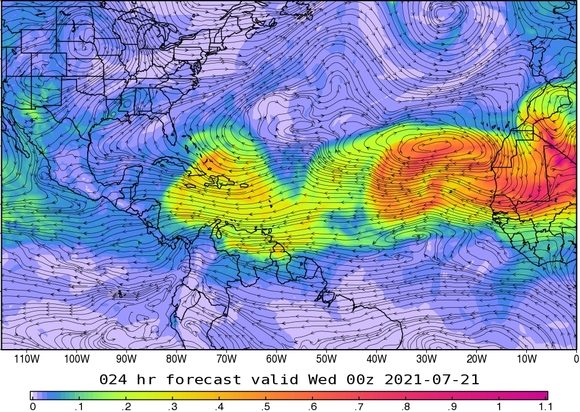
Like a faithful visitor, once again the dust of the Sahara is perceived in a good part of Cuba. The province of Las Tunas does not escape to the arrival of this atmospheric phenomenon that, usually, passes through this geographical area from the end of June to the middle of August.
Las Tunas, Cuba.- There is no reason to be alarmed, the renowned meteorologist Alexey Moreno Borges says, because, this time, it will not be as intense as in 2020. It has a lower incidence of particles; in other words, there are not high concentrations.
In the past calendar, residents of the eight municipalities of Las Tunas felt the effects of the clouds generated by the sand and dust storms of the Sahara and the Sahel, which advance from the African continent pushed by the trade winds.
Now, the dry air mass will last less, but it is also warned that it can cause a haze that will make long-distance visibility impossible. Its harmful effects on human health will also be noticeable, especially, in asthmatic people.
"It is highly recommended - Moreno Borges notes - not to expose yourself to the phenomenon and, in case you leave home, it is recommended to do so with protection."
As it has been reported in other moments, the negative impacts of the Sahara dust are concentrated in the possibility of causing respiratory diseases, especially in children and adults over 65 years of age, with a dry cough, sore throat, runny nose, and sneezing.
The deputy technical director of the Las Tunas Meteorological Center stressed that the fact that the area is under the effects of this phenomenon prevents the formation or strengthening of tropical cyclones and recalled that they rarely occur at this time of year.





